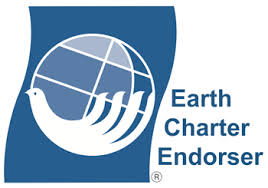Community Land Use/Territorial Land Use Project Management Planning Workshop
Format: Instructor-led | In-Class & Virtual
Duration: 3 days | PDUs: 24
Cost: CAD 1,950.00
NOW VIRTUAL! Upcoming Community & Territorial LUP Workshops
Call For Dates!
Every Tues & Thurs | 1:00PM - 4:00PM EST (10:00AM - 1:00PM PST)
Overview
Processes, Tools and Techniques that will allow Indigenous communities & organizations to more effectively: Plan, Manage and Implement Land Use & Territorial Land Use projects
Territorial Land and Community Land Use Planning in an Indigenous community is a complex process, comprised of multiple projects that need to be managed in a coordinated way over several years
Additionally, there are many internal organizational barriers ex. lack of understanding cross-functionally, (at both Leadership and Senior Management levels) of TLUP and LUP process/projects, and externally (sporadic funding from DIS, multijurisdictional political, environmental and historical (CP’s) constraints, community buy-in etc) that need to be addressed
To manage such a complex set of deliverables and barriers requires a structured framework and a meticulous approach
Target Audience
This Workshop is designed for Chief & Council, Senior Management & Administration teams (Territorial Stewardship, Lands, Referrals Officers, Planners, Environmental Coordinators, Economic Development, Consultation) that want to improve their project management skills and manage projects more effectively
Workshop Description
Utilizing client specific TLUP and LUP case projects, this workshop focuses on the important and critical front-end planning phases. It introduces participants to Project Management Planning Essentials regarding topics such as planning strategies for ramping up projects, balancing scope, schedule and cost; balancing & assessing strong/diverse stakeholder needs, performance reporting considerations, aspects of contract/procurement managementand risk management
Compliant with the Project Management Body of Knowledge (PMBoK), this case-based hands-on session also includes tips & techniques gleaned from over 40 years of project experience. A comprehensive reference manual that includes industry best practices and templates are also provided
Instructional Approach
A certified PMP instructor with extensive Indigenous Land Use Project Planning experience facilitates the workshop content. Application of the learning is enhanced and reinforced by hands-on exercises based on TLUP and LUP cases. Participants conduct the exercises in a team-based format, thereby enhancing their team-building knowledge and skills
Learning Objectives
At the end of this workshop, participants will have the confidence and the skills to prepare the most important and critical front end Project Planning tools that articulate, define and organize their TLUP and LUP projects. In addition, they will be able to clearly communicate their project and project needs to others to seek the required approvals, and to control the project during its implementation phase. Participants find that most tools and techniques learned can be applied in their workplace the very next day. Specifically, at the conclusion of this workshop, participants will be able to:
- Understand the differences between projects/programs and operations
- Define a project and the 5 phases of its life cycle
- Understand the relationship between Strategic Planning and Project Management
- Explain what a Project Proposal and a Project Charter are
- Develop a Draft TLUP or LUP Project Proposal
- Define the SMARTS Objectives of a Project
- Explain what a Deliverable and Work Breakdown Structure are
- Develop a Draft TLUP/LUP Deliverable and Work Breakdown Structure
- Identify key aspects of Stakeholder Management
- Develop a Draft Stakeholder Analysis for a TLUP or LUP project
- Explain what a Precedence Network Diagram is used for
- Build a precedence network diagram and determine its Critical Path
- Identify key aspects of Risk Assessment
- Learn about factors for determining how to organize projects for success
- Learn about the 4 stages of team development
Workshop Outline
Unit 1: Introductory Overview
Unit 2: Project Life Cycle
Unit 3: Project Proposal/Charter
Unit 4: Deliverable/Work Breakdown Structure (DBS/WBS)
Unit 5: Stakeholder Management
Unit 6: Precedence Network Diagram
Unit 7: Identifying the Critical Path
Unit 8: Risk Assessment
Unit 9: Project Organization Structures
Unit 10: Resource Management

